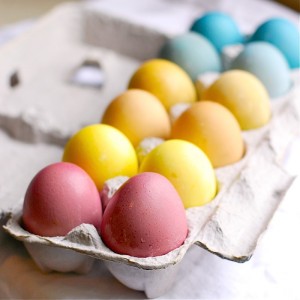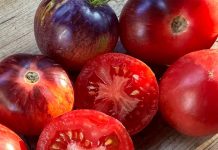 The tradition of Easter egg hunt lives on, with little boys and girls scrambling around the bushes looking for the proverbial colored egg hiding secretly for little hands to find. Nowadays the plastic egg reins popular, with chocolate goodies or coins nesting inside the variety of pastel colors.
The tradition of Easter egg hunt lives on, with little boys and girls scrambling around the bushes looking for the proverbial colored egg hiding secretly for little hands to find. Nowadays the plastic egg reins popular, with chocolate goodies or coins nesting inside the variety of pastel colors.
But in the past, real eggs dominated the holiday, bringing the fertility symbol of spring into the home.
No one really knows the origin of decorating eggs, but it was 18th century German immigrants in the Pennsylvania Dutch area that brought the legend of an egg bearing rabbit to the U.S.
Coloring eggs was always a fun venture for me as a child. I was amazed at how the liquid color soaked into the egg’s shell and became beautifully decorated.
Draw pictures with crayons and the dye missed those lines, with a picture taking shape on the shell.
But as we have grown wiser, using artificial colors is certainly not a smart undertaking. They’re full of chemicals that have been shown to cause allergic reactions, among other things.
Yet there is a natural way to dye the eggs so children can still partake in the creative, fun custom and be healthy.
As with all things natural, it requires a little more prep work and time. It can become a bit messy, but in the long run it is providing a fun time for children.
How to make natural dyes is basically taking what our ancestors used for thousands of years to make any color you desire: Fruits, vegetables and flowers.
This recipe posted on many websites consists of 2 cups roughly chopped raw beets (pink/red color) or 2 cups blueberries, crushed (blue/purple color), or 1 teaspoon ground turmeric (yellow color) and 1 teaspoon distilled white vinegar.
Choose either of the color choices and place in a small pot with 2 cups of water, then bring to a boil. Cover, reduce heat to medium-low and simmer for 10 minutes. Grab a fine mesh sieve or cheesecloth and strain, getting rid of any solids, and then stir in the vinegar. Cool to room temperature. The eggs are then colored by dipping the eggs in the dye, turning often for even coating or until desired color is reached.
For more colors there are several other options. Again, follow the same recipe above, though there might be a need to use more or less of an ingredient.
For yellow, try lemon or orange peels, carrots or celery seed. Paprika, cumin, chili powder or yellow onion skins are good for the color orange.
Cranberries, raspberries or radishes provide red and spinach leaves make for green coloring.
Edibles for a blue/lavender coloring is red cabbage, blackberries, purple or red grape juice.
For a brown/beige dye, coffee, tea or walnuts works well. Hibiscus tea provides a wonderful purple dye.
These natural colorings on eggs create their own mottled look but wrapping kitchen twine around it before dipping can make fun designs.
Remember, hard-boiled eggs provide many nutrients such as choline, folate, iron and calcium in the whites. And though the yolk does contain unsaturated fatty acids and 210 milligrams of cholesterol, the debate continues on whether or not cholesterol levels are raised higher by eating eggs.
The nutrient value also hits some highs. There are 245 IUs of vitamin A, 18.26 IUs of vitamin D as well as vitamin E and K, none which are found in the whites.
The yolk also contains lutein and zeaxanthin—carotenoids that guard against certain cancers, chronic diseases and eye health.
Always choose pasture raised hens’ eggs, organic if possible, since the nutrient value goes up, the chickens are raised humanely and they simply taste better.
All in all, naturally colored hard-boiled eggs not only are high in nutrients and devoid of artificial dyes, but certainly a far better choice for kids than all the chocolate bunnies, eggs and jellybeans found buried in an Easter basket.
Reach Gina at Ima_gina_tion@yahoo.com.




